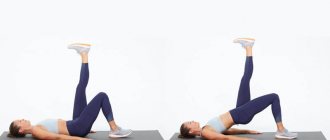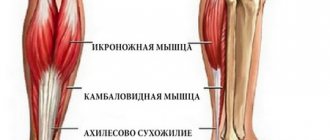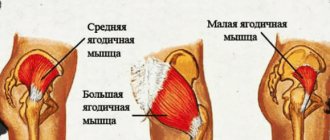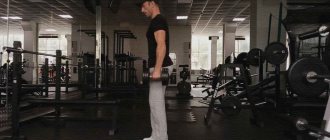Your butt is crying out: it wants you to do this exercise.
If you follow any Instagram accounts, you've probably seen thousands of different workout programs that promise to help you achieve your dreams. But there's one statement that anyone who's developed a toned butt can agree with: "The glute bridge is the key exercise for your butt."
"This exercise won't bulk up your butt alone," says Jenna Epperly, a certified fitness trainer. “But it is, without a doubt, effective. It can also be incorporated into any training plan without delay.”
What is this?
The glute bridge (pelvic lift) is an exercise designed to train the front and back of the thigh and gluteal muscles. This exercise also helps to stretch the leg muscles and even prevent or at least alleviate lower back pain during menstruation, because improves blood flow in the pelvic area.
Is it possible to exercise during menstruation?
Benefit
- the ability to load the buttocks without putting stress on the lower back (unlike squats),
- the gluteal bridge has a simple technique, so usually even beginners do not have any difficulties,
- the abdominal muscles are additionally strengthened,
- and also stretches the back of the thigh,
- variability: you can perform the exercise with your own or free weight even at home, as well as in the simulator,
- improved tone (due to blood circulation) of the pelvic organs and increased libido.
What are the benefits of a glute bridge?
There are several reasons to include glute bridges in your workouts.
The Lifehacker Telegram channel contains only the best texts about technology, relationships, sports, cinema and much more. Subscribe!
Our Pinterest contains only the best texts about relationships, sports, cinema, health and much more. Subscribe!
Exercise pumps up the buttocks
Double Leg Glute Bridge Engages Electromyographic Analysis of Gluteus Maximus, Gluteus Medius, and Tensor Fascia Latae During Therapeutic Exercises With and Without Elastic Resistance, BUILDING A BETTER GLUTEAL BRIDGE: ELECTROMYOGRAPHIC ANALYSIS OF HIP MUSCLE ACTIVITY DURING MODIFIED SINGLE-LEG BRIDGES Gluteus Maximus 23–31%, and on one leg – by 51–55%. This is more than in squats (up to 14%) and lunges (23–26%), which are constantly used to pump up the butt.
Strengthens the thighs
The exercise involves the muscles of the back of the thigh. You can shift the load on them by adjusting the position of your feet on the floor.
Does not overload the tensor fascia lata
This is a muscle located on the lateral surface of the thigh. If the buttocks are weak, they take on a lot of the load, become clogged and shortened, which can cause pain in the knees, hips and lower back. The single-leg glute bridge helps strengthen weak buttocks and does not require much Electromyographic Analysis of Gluteus Maximus, Gluteus Medius, and Tensor Fascia Latae During Therapeutic Exercises With and Without Elastic Resistance.
Eliminates the risk of injury
The maximum that can happen to you if the technique is incorrect is insufficient muscle development. It is almost impossible to get injured while performing the exercise.
Has many variations
There is no need to simplify the exercise - it is already easy enough for any level of training. But you can complicate it indefinitely by changing the support and adding resistance.
Currently reading











